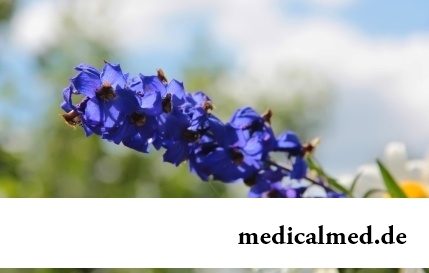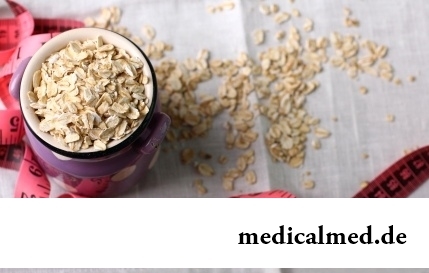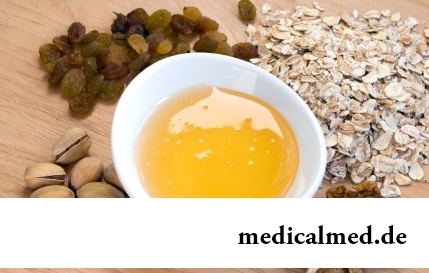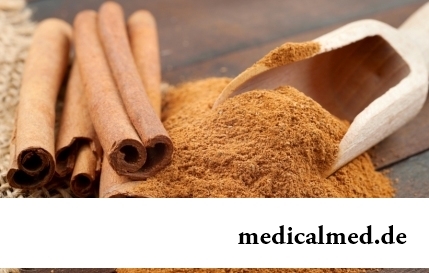





Garamycinum
Application instruction:
Garamycinum – antibacterial agent of a broad spectrum of activity from group of aminoglycosides.
Form of release and structure
- Solution for injections (on 1 and 2 ml in ampoules, on 10 ampoules in packaging);
- Cream (on 15 g in tubas);
- Ointment (on 15 g in tubas).
Active agent – Gentamycini sulfas:
- 1 ml of solution – 0,04 g;
- 1 g of cream – 0,001 g;
- 1 g of ointment – 0,001 g.
Indications to use
For injection solution:
- Sepsis of newborns;
- Bacteremia;
- Septicaemia;
- Respiratory infections;
- Digestive tract infections;
- Infections of urinogenital ways and kidneys;
- Infections of the central nervous system, including meningitis;
- Intraperitoneal infections, including peritonitis;
- Infections of organs of sight;
- Infections of bones, soft tissues and skin, including contaminated wounds and burns;
- Gonorrhea;
- Perioperatsionny prevention of an infection.
Cream and ointment are applied to treatment of bacterial damages of skin.
Contraindications
Absolute:
- Heavy chronic renal failure with uraemia and an azotemia;
- Neuritis of an acoustical nerve;
- Hypersensitivity to drug or other aminoglycosides in the anamnesis.
Relative (because of risk of development of complications it is necessary to be careful):
- Botulism;
- Parkinsonism;
- Myasthenia;
- Renal failure;
- Dehydration;
- Prematurity of children;
- Neonatality period;
- Advanced age.
During pregnancy and feeding by a breast use of drug is possible only in the presence of vital indications.
Route of administration and dosage
Cream and ointment
Cream and ointment apply Garamycinum outwardly: apply with a thin layer on the struck surfaces of skin 3-4 times a day. If there is a need means can be used under a bandage.
Solution for injections
Solution for injections Garamycinum is intended for intramuscular and intravenous administration.
Intravenously the drug is administered kapelno within 1,5-2 hours in 5% solution of a dextrose or 0,9% chloride sodium solution, the entered volume – from 50 to 300 ml. For children the volume of the entered liquid is reduced (concentration should not exceed 0,1%=1 mg/ml).
At moderately severe diseases appoint adult with normal function of kidneys 3 mg/kg a day with frequency rate of introduction 2 or 3 times a day, respectively two equal portions in 12 hours or three equal portions in 8 hours.
At a severe disease with high risk of a lethal outcome the daily dose is increased to 5 mg/kg with frequency rate by 3-4 times, after clinical improvement of a state the dose is reduced to 3 mg/kg/days. A course of treatment – no more than 7-10 days.
At infectious and inflammatory diseases of urinary tract to patients with normal function of kidneys the drug is administered intramusculary in a dose of 120-160 mg of 1 times a day within 7-10 days, at gonorrhea – intramusculary once in a dose of 240-280 mg. About 1/2 doses are intramusculary recommended to enter into each buttock.
Doses for children:
- Newborns (before the 7th birthday) and premature – on 2,5-3 mg/kg each 12 hours;
- Babies are more senior than 7 days and children till 1 year – on 2,5 mg/kg each 8 hours;
- Children are more senior than 1 year – on 2-2,5 mg/kg each 8 hours.
To elderly people and patients with disturbances of secretory function of kidneys, and also at a serious burn disease the dose of Garamycinum is defined depending on concentration of gentamycin in a blood plasma. The interval between introductions of average doses is determined by a formula: an interval (in hours) = concentration of creatinine (mg / 100 ml) x 8.
At heavy infectious processes introduction of smaller doses with a bigger frequency is recommended. At the same time the single dose has to be picked up so that the maximum concentration of gentamycin did not exceed 0,012 mg/ml.
At obesity, ascites and hypostases the dose is determined by Sukhoi and "ideal" body weight.
At renal failures and carrying out a hemodialysis after the session administration of drug in a dose is recommended: adult – 1-1,7 mg/kg, to children – 2-2,5 mg/kg depending on weight of an infection.
Side effects
- Alimentary system: nausea, vomiting, hyperbilirubinemia, increase in activity of hepatic transaminases;
- Bodies of a hemopoiesis: granulocytopenia, leukopenia, thrombocytopenia, anemia;
- Nervous system: feeling of numbness, paresthesia, twitching of muscles, drowsiness, headache, epileptic seizures; children have a psychosis;
- Urinary system: renal failure (microhematuria, proteinuria, oliguria); in some cases – a renal tubular necrosis;
- Sense bodys: labyrinth and vestibular disturbances, decrease in hearing, sonitus, irreversible deafness;
- Allergic reactions: fever, skin rash, itch, eosinophilia, Quincke's disease;
- Others: fever, superinfection;
- Laboratory indicators: children have a hypopotassemia, a hypocalcemia, a hypomagnesiemia.
Special instructions
During treatment it is necessary to control concentration of gentamycin in blood serum and clearance of creatinine, especially at elderly people.
The risk of development of nephrotoxicity is higher at patients with renal failures, and also at use of drug in high doses or during the long period. For this reason it is necessary to control function of kidneys regularly: 1-2 times a week, and at the patients receiving high doses or being on treatment more than 10 days – daily.
Not to allow development of a hearing disorder it is necessary periodically (1-2 times a week) to investigate vestibular function for definition of a hearing loss at high frequencies. In case of unsatisfactory audiometric tests it is necessary to lower a dose or to cancel drug.
Patients with infectious and inflammatory diseases during treatment are recommended to use the increased amount of liquid.
It is necessary to consider probability of development of resistance of microorganisms. In this case it is necessary to cancel Garamycinum and to appoint the corresponding treatment, based on data of an antibiotikogramma.
It must be kept in mind probability of neuromuscular blockade and paralysis of breath.
Medicinal interaction
- Kurarepodobny drugs: their myorelaxation action amplifies;
- Anti-myasthenic means: their efficiency decreases;
- Loopback diuretics, Cisplatinum, others from - and nefrotoksichny drugs: also ototoxicity of gentamycin amplifies nefro-;
- Antibiotics of a penicillinic row (for example, карбенициллин, ampicillin): antimicrobic effect of gentamycin increases;
- Indometacin parenterally: the risk of development of toxic actions of Garamycinum increases;
- Metoksifluran, polymyxins for parenteral administration and other drugs blocking neuromuscular transmission (narcotic analgetics, halogenated hydrocarbons as means for inhalation anesthesia, transfusion of large amounts of blood with citrate preservatives): the risk of development of nephrotoxic action and an apnoea owing to strengthening of neuromuscular blockade increases.
In the form of solution Garamycinum pharmaceutical is incompatible with any other medicines therefore they cannot be mixed in one syringe.
Terms and storage conditions
To store at a temperature from 2 to 30 ºС in the place, unavailable to children.
Period of validity – 5 years.
The liver is the heaviest body in our body. Its average weight makes 1,5 kg.

The brain of the person is studied not one hundred years, but the quantity of the riddles connected with this body increases rather, than reducing...
Section: Articles about health
The fatigue, sleep debt, disturbances of food, bad mood, vagaries of the weather – all these circumstances badly affect our appearance. Especially the person suffers: skin becomes flabby, loses healthy color, becomes covered by wrinkles, zones of hypostases and t appear...
Section: Articles about health
New year, wedding, birthday, office party – an occasion to drink at the Russian person will always be. How to reduce a negative impact of alcohol by an organism and to avoid a condition of strong intoxication? The most correct council – to refuse the use of alcoholic drinks. Council is true, but not always feasible. We offer several advice which will help you in cases when it is impossible to avoid alcohol intake....
Section: Articles about health
Feeding by a breast - the integral part of ideal motherhood allowing to come into contact with the kid and to create since early years...
Section: Articles about health
Such trouble as the milkwoman's attack, at least once in life happened almost to each woman. Prevalence of a disease is explained by the fact that the causative agent of an illness belongs to the so-called opportunistic microflora living on mucous an obol...
Section: Articles about health
Among a set of the perfumery and cosmetic goods which are released today the special group is made by the means containing antibacterial components. Such types of gels, shampoos, soaps, creams, lotions and other products are positioned by manufacturers as a panacea from all diseases caused by pathogenic microorganisms. The unlimited and uncontrolled use of similar means becomes result of trustfulness of the buyers hypnotized by persuasive advertizing sometimes. Many spetsial...
Section: Articles about health
The summer of this year in Russia was very ambiguous. Regions suffered from a merciless heat, from pouring rains, from times...
Section: Articles about health
The sclera and mucous membrane of an eye are intensively supplied with blood vessels which problem - to saturate nervous tissues of body with nutrients and oxygen. In a normality vessels are almost not noticeable, however at their expansion (owing to истонч...
Section: Articles about health
Long time antibiotics were considered as a panacea from all diseases and were appointed even at insignificant symptoms of an infection. Even now not everyone knows in what force of antibiotics how and when they should be accepted. Let's discredit 7 popular myths about such drugs....
Section: Articles about health
It is impossible to imagine human life in which there would be no plants. Practically in each apartment and any of productions...
Section: Articles about health
The list of stereotypes of which, apparently, all know strongly includes following: British surely eat porridge for breakfast. Perhaps, not all modern residents of Britain arrive quite so, but for those from them which continue to follow this t...
Section: Articles about health
Frosty air, fresh wind and easy snowball at most of Russians are associated with cheerfulness, health and cheerful entertainments on which our winter is so generous. But, unfortunately, cold season sometimes brings also troubles with health. It is not about seasonal colds and frostbites, and about those chronic illnesses which symptoms are shown preferential in the winter....
Section: Articles about health
Olive oil – the product capable to make a powerful contribution to health of the person if it includes it in the diet. Rich vitamin...
Section: Articles about health
The winter swimming in open reservoirs called in our country by "winter swimming" – officially recognized sport and one of the most extreme ways of a hardening of an organism. This occupation has an old story and adherents in many countries. Are annually carried out...
Section: Articles about health
Each person has easy indispositions which he transfers "standing", trying not to ask for medical care. Arguments at the same time are adduced same: "it is a trifle, itself will pass", "I have too many important issues", "there are no wish to spend time for doctors", etc. At good shape of health, normal working capacity and lack of suspiciousness dislike for complaints to such problems is quite natural. It is not the most correct, but very widespread type of behavior. I am glad...
Section: Articles about health
Let's begin with the fact that a separate illness which is called "adjournment of salts", just does not exist. In practice this household name of plank beds...
Section: Articles about health
From the failure of work of immune system which is shown in the form of an allergy, statistically, more than 40% of the population of the globe suffer. In most cases pathological reactions cause the substances which are contained in food stuffs, hair of animals, medicines...
Section: Articles about health
More than a half of the married couples which faced prostatitis – leave. The new broadcast "Female View of Prostatitis" will help to learn – whether you have or your relatives problems....
Section: Articles about health
The number of long-livers is very small. One person from 5 thousand lives up to age of 90 years, and the centenary boundary steps only about...
Section: Articles about health
For anybody not a secret that the modern person eats not as his ancestors. For the last 100 years in broad access there were absolutely new products which are result of use of the latest technologies in food production. Significantly changed спо...
Section: Articles about health
The business lady, the become mother, it is necessary to solve an array of problems. But of them is main: how to combine the beloved child and work? What traps trap the working mother and how she needs to behave?...
Section: Slideshow
You heard that laughter prolongs life? To establish longevity direct link with sincere fun to researchers yet not удалос...
Section: Articles about health
You are office worker, the driver, the fan of winter sports or do not think of life without bicycle? You lead a slow-moving life and you move on the city only on the car? You have no constant partner and you do not love the protected sex? Attention! You one...
Section: Articles about health
Tea is loved and use almost everything. This drink has tonic properties, contains the tannins capable to suppress activity of causative organisms. Recently great popularity was gained by teas with vegetable additives. The medicative herbs, spices and fruit which are a part of such mixes enrich drink with vitamins and microelements, increasing its nutritional value and creating additional curative effect....
Section: Articles about health
Ayurveda - the most ancient tselitelsky practice which came to us from India. It represents the doctrine about maintenance physical, ps...
Section: Articles about health
Iodine - one of thirty most important microelements in our organism. The main role of iodine consists in synthesis of thyroid hormones of a thyroid gland - the substances which are responsible for the majority of exchange processes of an organism. It is known that thyroid hormones consist...
Section: Articles about health
Tuberculosis – a serious infectious disease which development is caused by mycobacteria (Koch's bacilli). The illness is known from an extreme antiquity. Long time fight against it was considered as ineffective. Quite often the disease affected the whole families, and mortality from it was very high. It became the reason of emergence of a set of delusions concerning transmissibility and a possibility of treatment of tuberculosis....
Section: Articles about health
